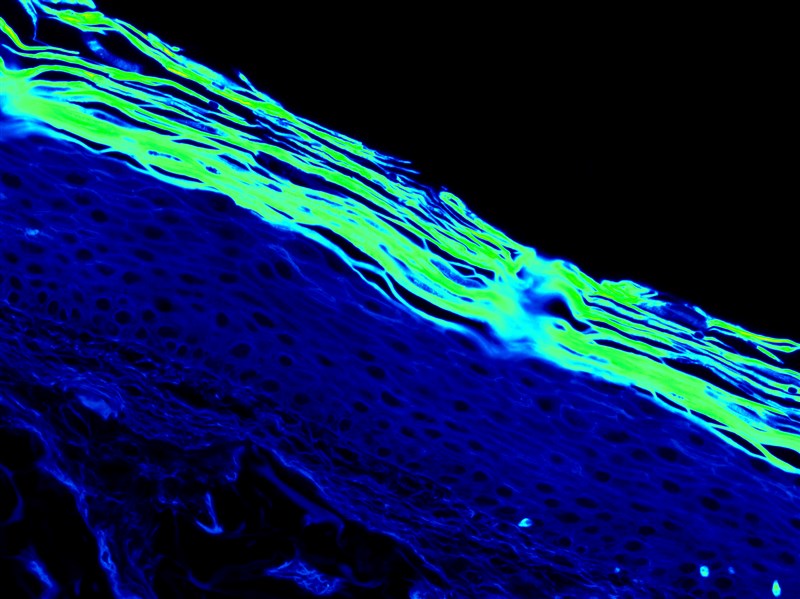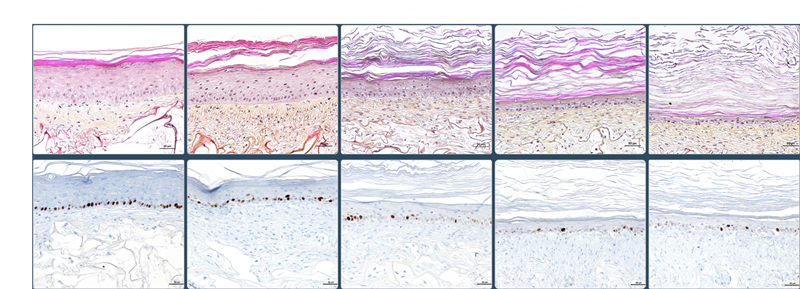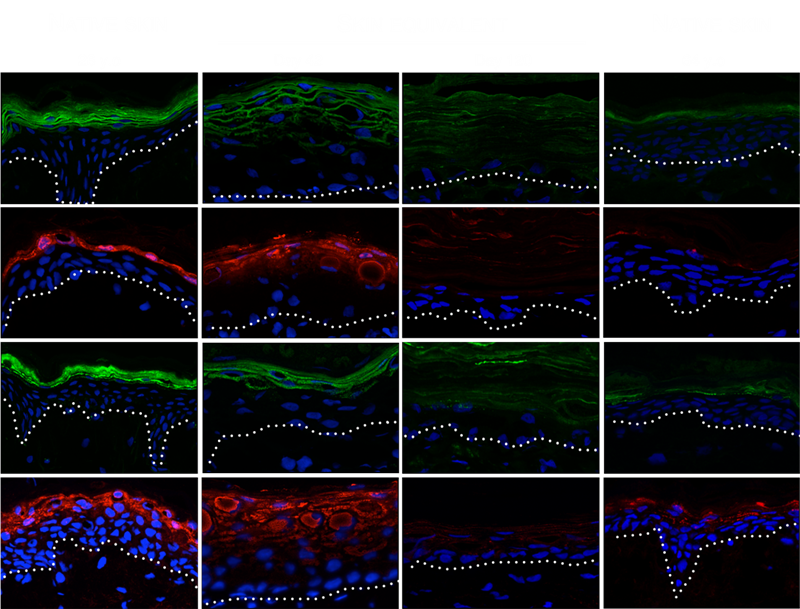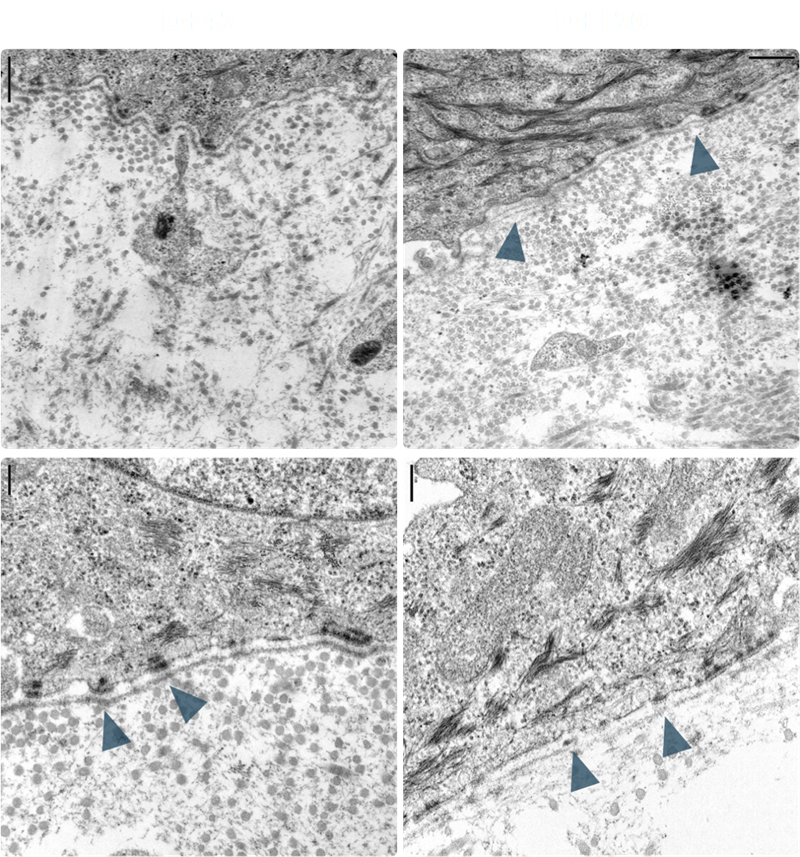3D CHRONO AGING Skin
The « 120 DAYS » in vitro skin model to test anti-aging products

What is it About?
Skin Aging is a complex phenomenon in which several mechanisms operate
simultaneously. Among them, intrinsic aging is a time-dependent process, which
leads to gradual skin changes affecting its structure and function.
Despite much progress these last two decades in the field of skin tissue engineering,
designing models of skin chronological aging remains a difficult challenge.
By using LabSkin proprietary technologies, our Skin Designers tackled this challenge by creating a unique approach for the generation of the first worldwide 3D Chrono Aging skin model.
3D CHRONO AGING model, a “120 days” extended-time skin model
By using prolonged culture as a proxy for cellular aging, we extended to 120 days the culture time of a skin equivalent model based on our unique LabSkin matriX® scaffolding biomaterials.

Extending time in culture to 60, 75 and 120 days leads to sequential decrease of epidermal thickness accompanied by a decrease of cells expressing the proliferation marker Ki67. Epidermal thickness over time revealed a regular and significant 20% decrease in width at each time point.

Although the proliferative potential has importantly and significantly decreased, cells
expressing Ki67 are still present in the basal layer, showing the maintenance of the viability of
this model even after 120 days of culture.

Similar to the situation observed in vivo, the level of p16INK4A increases in the basal and the lower suprabasal layers, supporting cellular senescence process associated to our 3D CHRONO AGING skin model.
Epidermal differentiation profile similar to human aged skin
3D CHRONO AGING LabSkin model demonstrates the same phenotypic changes that are observed in chronological aging.
Reconstructed epidermal compartment undergoes subtle but significant structural and
histological alterations similar to some aging features.
Epidermal atrophy seems to affect mostly the spinous cell layers whereas neither stratum corneum nor stratum granulosum seems to be affected. Most pronounced changes occur within the basal cells, which display an increased heterogeneity in size with an overall increased volume similar to in vivo aging process.

3D CHRONO Aging model exhibits a reduction of epidermal differentiated cell layers accompanied by anomalies in the differentiation process compromising natural protective skin barrier and reflecting in vivo age-related changes.
Ultrastructural age-associated damages
Ultrastructural analysis of epidermal basement membrane showed typical features of aged skin such as duplication of lamina densa and alterations of hemidesmosomes.

3D CHRONO Aging skin model exhibits irregular basement membrane, frequent reduplication of the lamina densa and disruption in hemidesmosome–keratin filament association reduction in size of the sub-basal hemidesmosome dense plates, similar to in vivo aging-related damages.
3D CHRONO AGING Skin mimics several important features of the in vivo aging processes,
taking place in the aged epidermis and dermis. This is a reliable model to identify new molecules that could be targeted in order
to improve the external appearance of the aging skin for dermocosmetic purposes.








